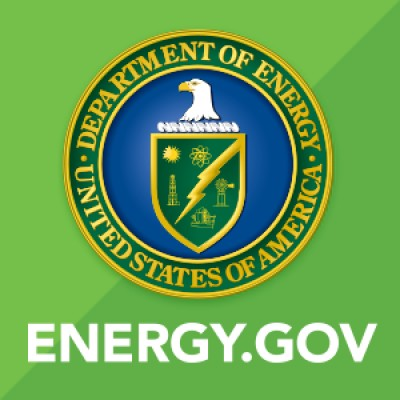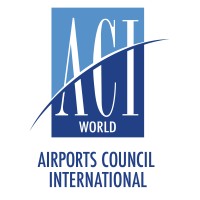India’s Infrastructure Surge: A New Era of Connectivity and Sustainability
September 19, 2024, 10:20 pm

Location: United States, District of Columbia, Washington
Employees: 10001+
Founded date: 1977
Total raised: $45M

Location: Canada, Quebec, Montreal
Employees: 51-200
Founded date: 1991

Location: Japan, Tokyo, Shinagawa-ku
Employees: 10001+
Founded date: 2010
Total raised: $20.65B
India is on the move. The nation is laying down tracks, building roads, and upgrading airports. Prime Minister Narendra Modi recently unveiled railway projects worth Rs 28.71 billion in Odisha. This is more than just numbers; it’s a vision for a connected future.
Railways are the lifeblood of India. They carry people and goods across vast distances. The new projects aim to enhance connectivity and reduce congestion. The 25 km Lanjigarh Road-Ambadola-Doikallu section is a key piece of this puzzle. It connects western Odisha to Andhra Pradesh. This isn’t just about trains running smoothly; it’s about economic lifelines. Freight movement will become more efficient, unlocking potential in resource-rich areas.
Another project, the 23 km Laxmipur Road-Singaram-Tikiri section, is part of a larger effort to double the Koraput-Singapur road. This will increase train capacity in southern Odisha. It’s a vital artery for transporting goods to major markets. The 41 km Dhenkanal-Sadashibapur-Hindol Road section will bolster industrial routes. It’s about making sure that goods flow seamlessly.
The government isn’t stopping there. Modi laid the foundation for a 7 km flyover at Paradeep Port. This flyover will eliminate surface crossings, ensuring smoother train movements. It’s a small but significant step toward modernizing India’s transport infrastructure.
But the focus isn’t solely on railways. The government is also looking skyward. Tuticorin Airport in Tamil Nadu is undergoing a major upgrade. The project, valued at Rs 3.81 billion, will extend the runway and build a new terminal. This will allow the airport to handle more passengers and larger aircraft. It’s a strategic move to enhance air travel capacity in the region.
As India builds its infrastructure, it’s also turning its gaze toward sustainability. The country is partnering with the United States to promote sustainable aviation fuel and hydrogen in public transport. This initiative is part of the Strategic Clean Energy Partnership. It’s a commitment to a greener future, reducing carbon footprints while enhancing energy security.
The government’s push for clean energy doesn’t stop at aviation. Modi’s administration is also focused on renewable energy sources. The aim is to achieve net-zero emissions by 2070. This ambitious target requires a multi-faceted approach. Solar energy, electric mobility, and green hydrogen are at the forefront. It’s about creating a sustainable ecosystem that benefits both the economy and the environment.
In the first 100 days of his third term, Modi has highlighted achievements across various sectors. Infrastructure development is a cornerstone of this strategy. The government is investing heavily in roads, railways, and ports. These projects are designed to strengthen India’s global trade links. They aim to reduce logistical costs, making Indian goods more competitive on the world stage.
Agriculture is another area of focus. The government is rolling out schemes to empower farmers. Initiatives like the PM Kisan Samman Nidhi aim to provide financial support. The goal is to modernize the agricultural supply chain. This includes integrating technology to boost productivity. It’s about ensuring that farmers can thrive in a changing economy.
Healthcare is also undergoing a transformation. New hospitals and health facilities are being built. Digital health initiatives are making healthcare more accessible. This is crucial for a country with a vast population. The aim is to ensure that quality healthcare reaches every corner of India.
Education reforms are another pillar of Modi’s strategy. The government is working to improve the quality of education. Skill development and vocational training are essential for preparing the youth for the job market. New educational institutions and digital platforms are being launched. This is about widening access to quality education, especially in remote areas.
International relations are also a priority. Modi’s government is strengthening India’s global position. Diplomatic initiatives are aimed at expanding economic cooperation and climate action. It’s about ensuring that India plays a significant role on the world stage.
As India forges ahead, the focus on inclusive growth is paramount. The government is targeting marginalized communities. Welfare schemes aim to improve socio-economic conditions. This is about ensuring that no one is left behind in the nation’s progress.
Economic growth is the ultimate goal. The government is promoting ease of doing business. Foreign direct investment is being encouraged. Small and medium-sized enterprises are receiving support. The Make in India initiative is driving manufacturing growth. It’s about creating jobs and boosting the economy.
In conclusion, India is at a crossroads. The infrastructure projects unveiled by Modi are not just about connectivity; they are about building a sustainable future. The focus on clean energy, agriculture, healthcare, and education reflects a holistic approach. As the nation moves forward, it is laying the groundwork for a prosperous and inclusive society. The journey has just begun, but the destination is clear: a stronger, more connected India.
Railways are the lifeblood of India. They carry people and goods across vast distances. The new projects aim to enhance connectivity and reduce congestion. The 25 km Lanjigarh Road-Ambadola-Doikallu section is a key piece of this puzzle. It connects western Odisha to Andhra Pradesh. This isn’t just about trains running smoothly; it’s about economic lifelines. Freight movement will become more efficient, unlocking potential in resource-rich areas.
Another project, the 23 km Laxmipur Road-Singaram-Tikiri section, is part of a larger effort to double the Koraput-Singapur road. This will increase train capacity in southern Odisha. It’s a vital artery for transporting goods to major markets. The 41 km Dhenkanal-Sadashibapur-Hindol Road section will bolster industrial routes. It’s about making sure that goods flow seamlessly.
The government isn’t stopping there. Modi laid the foundation for a 7 km flyover at Paradeep Port. This flyover will eliminate surface crossings, ensuring smoother train movements. It’s a small but significant step toward modernizing India’s transport infrastructure.
But the focus isn’t solely on railways. The government is also looking skyward. Tuticorin Airport in Tamil Nadu is undergoing a major upgrade. The project, valued at Rs 3.81 billion, will extend the runway and build a new terminal. This will allow the airport to handle more passengers and larger aircraft. It’s a strategic move to enhance air travel capacity in the region.
As India builds its infrastructure, it’s also turning its gaze toward sustainability. The country is partnering with the United States to promote sustainable aviation fuel and hydrogen in public transport. This initiative is part of the Strategic Clean Energy Partnership. It’s a commitment to a greener future, reducing carbon footprints while enhancing energy security.
The government’s push for clean energy doesn’t stop at aviation. Modi’s administration is also focused on renewable energy sources. The aim is to achieve net-zero emissions by 2070. This ambitious target requires a multi-faceted approach. Solar energy, electric mobility, and green hydrogen are at the forefront. It’s about creating a sustainable ecosystem that benefits both the economy and the environment.
In the first 100 days of his third term, Modi has highlighted achievements across various sectors. Infrastructure development is a cornerstone of this strategy. The government is investing heavily in roads, railways, and ports. These projects are designed to strengthen India’s global trade links. They aim to reduce logistical costs, making Indian goods more competitive on the world stage.
Agriculture is another area of focus. The government is rolling out schemes to empower farmers. Initiatives like the PM Kisan Samman Nidhi aim to provide financial support. The goal is to modernize the agricultural supply chain. This includes integrating technology to boost productivity. It’s about ensuring that farmers can thrive in a changing economy.
Healthcare is also undergoing a transformation. New hospitals and health facilities are being built. Digital health initiatives are making healthcare more accessible. This is crucial for a country with a vast population. The aim is to ensure that quality healthcare reaches every corner of India.
Education reforms are another pillar of Modi’s strategy. The government is working to improve the quality of education. Skill development and vocational training are essential for preparing the youth for the job market. New educational institutions and digital platforms are being launched. This is about widening access to quality education, especially in remote areas.
International relations are also a priority. Modi’s government is strengthening India’s global position. Diplomatic initiatives are aimed at expanding economic cooperation and climate action. It’s about ensuring that India plays a significant role on the world stage.
As India forges ahead, the focus on inclusive growth is paramount. The government is targeting marginalized communities. Welfare schemes aim to improve socio-economic conditions. This is about ensuring that no one is left behind in the nation’s progress.
Economic growth is the ultimate goal. The government is promoting ease of doing business. Foreign direct investment is being encouraged. Small and medium-sized enterprises are receiving support. The Make in India initiative is driving manufacturing growth. It’s about creating jobs and boosting the economy.
In conclusion, India is at a crossroads. The infrastructure projects unveiled by Modi are not just about connectivity; they are about building a sustainable future. The focus on clean energy, agriculture, healthcare, and education reflects a holistic approach. As the nation moves forward, it is laying the groundwork for a prosperous and inclusive society. The journey has just begun, but the destination is clear: a stronger, more connected India.